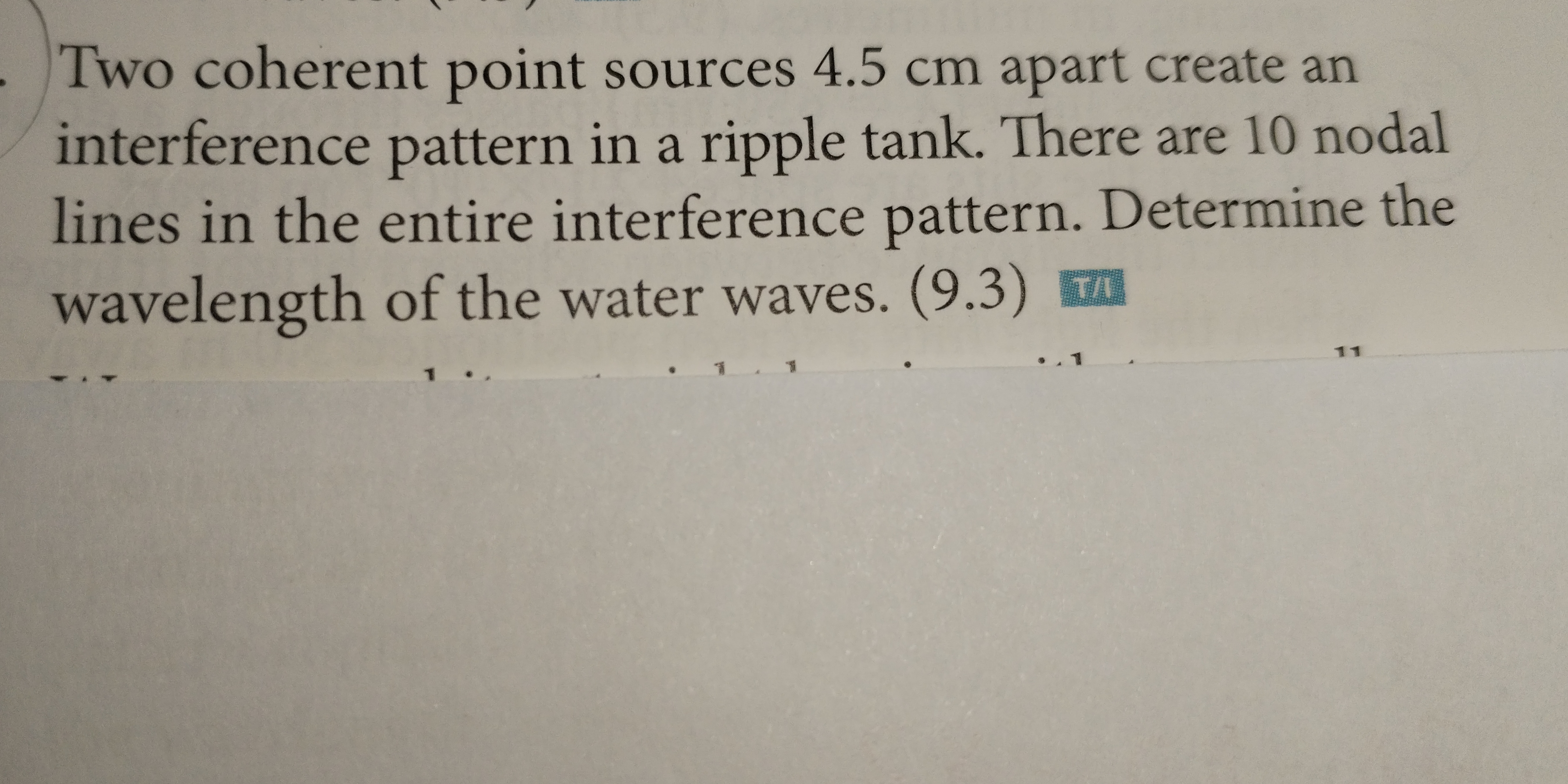Two coherent point sources 4.5 cm apart create an interference pattern in a ripple tank. There are 10 nodal lines in the entire interference pattern. Determine the wavelength of th... Two coherent point sources 4.5 cm apart create an interference pattern in a ripple tank. There are 10 nodal lines in the entire interference pattern. Determine the wavelength of the water waves.

Understand the Problem
The question is asking to calculate the wavelength of water waves given the distance between two coherent point sources and the number of nodal lines in the interference pattern. This involves applying principles of wave interference and using relevant formulas.
Answer
The wavelength of the water waves is $\lambda = 0.0045 \, \text{m}$.
Answer for screen readers
The wavelength of the water waves is $\lambda = 0.0045 , \text{m}$ or $0.45 , \text{cm}$.
Steps to Solve
- Identify the relationship between nodal lines and wavelength
In the interference pattern created by two coherent sources, the number of nodal lines (N) relates to the wavelength ($\lambda$) by the formula: $$ N = \frac{d}{\lambda} $$ where ( d ) is the distance between the two sources.
- Calculate the distance between the sources
The problem states that the distance between the two coherent point sources is ( d = 4.5 ) cm. We'll convert this into meters for standard units: $$ d = 4.5 , \text{cm} = 0.045 , \text{m} $$
- Plug in the values into the relationship
We know there are 10 nodal lines, so substituting the known values into the formula: $$ 10 = \frac{0.045}{\lambda} $$
- Rearrange to solve for wavelength
To isolate ( \lambda ), rearrange the equation: $$ \lambda = \frac{0.045}{10} $$
- Calculate the wavelength
Now, perform the calculation: $$ \lambda = 0.0045 , \text{m} $$
Convert this to centimeters for clarity: $$ \lambda = 0.0045 \times 100 = 0.45 , \text{cm} $$
The wavelength of the water waves is $\lambda = 0.0045 , \text{m}$ or $0.45 , \text{cm}$.
More Information
The wavelength is a fundamental property of waves that determines their behavior in interference patterns. In this scenario, the relationship found is crucial for understanding how multiple wave sources interact.
Tips
- Confusing the number of nodal lines with the number of antinodes.
- Forgetting to convert units consistently (e.g., mixing cm and m).
- Misapplying the formula, especially the relationship between the number of nodal lines and distance.
AI-generated content may contain errors. Please verify critical information